by Autumn Hilden
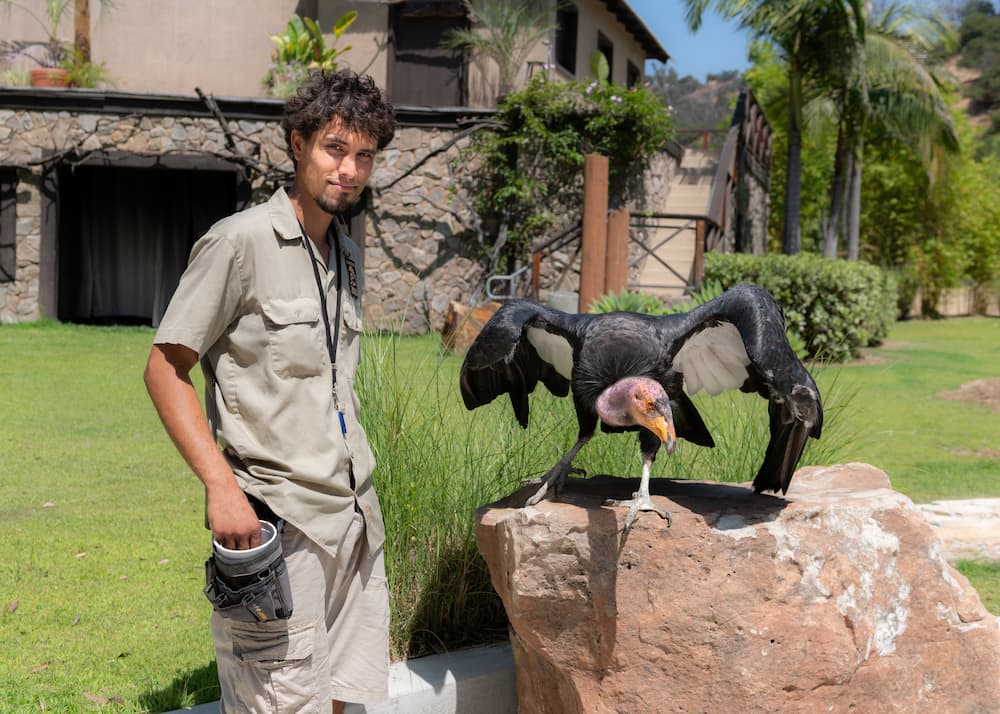
The third full week of July is National Zoo Keeper Week, and to celebrate the frontline stars of our Animal Care staff, we want to share some inside looks at what keepers do at the Zoo! Aside from wearing cool outfits and sharing their first-hand knowledge with guests, keepers do dozens of things that affect the day-to-day lives of animals.
First of all, they feed them! For some animals, this includes gathering leaves called “browse” from around Griffith Park and the City. Keepers also provide training, assist in medical procedures, conduct research and apply findings to enhance animal wellbeing; provide enrichment and monitor for changes in behavior; understand and respond to group dynamics for social animals; adjust routines and diets when needed; and clean up—there’s lots of cleaning involved in caring for animals at the Zoo. Aside from these usual activities, some keepers may even be called on to assist in field conservation efforts and wildlife releases.
That’s why the path to becoming a keeper takes a lot of dedication. Many keepers start as volunteers first, putting in hours of work and training to qualify for the keeper test. Qualifying for the test is a big milestone but is no guarantee for being able to take or pass the test, let alone to be hired part-time or full-time as a keeper. Those hardworking individuals that you see on your trips to the Zoo have earned their spots with love and sacrifice—the same qualities that make them the best caretakers of our animals.
Here’s what it’s like to do what they do!
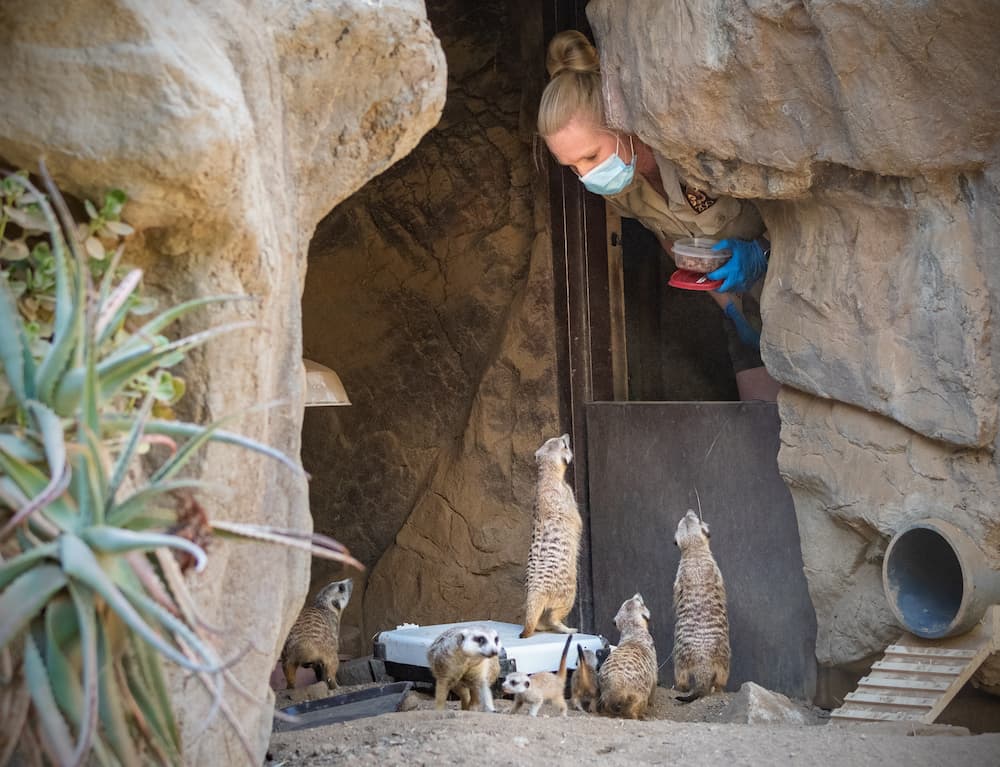
Maintaining a healthy weight is important for all the animals that call the L.A. Zoo home. Keepers, who spend so much time caring for the species at the Zoo, are often the first ones to notice changes in eating and activity habits. Introducing even simple behaviors like weighing takes time and patience from keepers. These meerkats first needed to learn to come when prompted, go where directed, and stay still for the required amount of time, to say nothing of accepting the presence of a scale in their habitat.

Careful attention must be paid to water temperature, rate of flow, and cleanliness in order to provide as close a match as possible to the southern mountain yellow-legged frogs’ natural habitat. Keepers are responsible for regulating these and all the tanks at the LAIR for the maximum comfort and wellbeing of our fish, reptiles, and insects.

Enrichment for animals takes the form of novelty items and experiences. Bringing new activities, smells, objects, or challenges into an animal’s habitat helps keep the animal fit, adaptable, and entertained. Keepers like Sara arrange for enrichment, place it in the habitat, and observe the kind of effect it has. These papier maché globes were created by volunteers for Sumatran tiger C.J. Monitoring and customizing the kinds of stimulus provided for C.J. contributes to his holistic wellbeing.
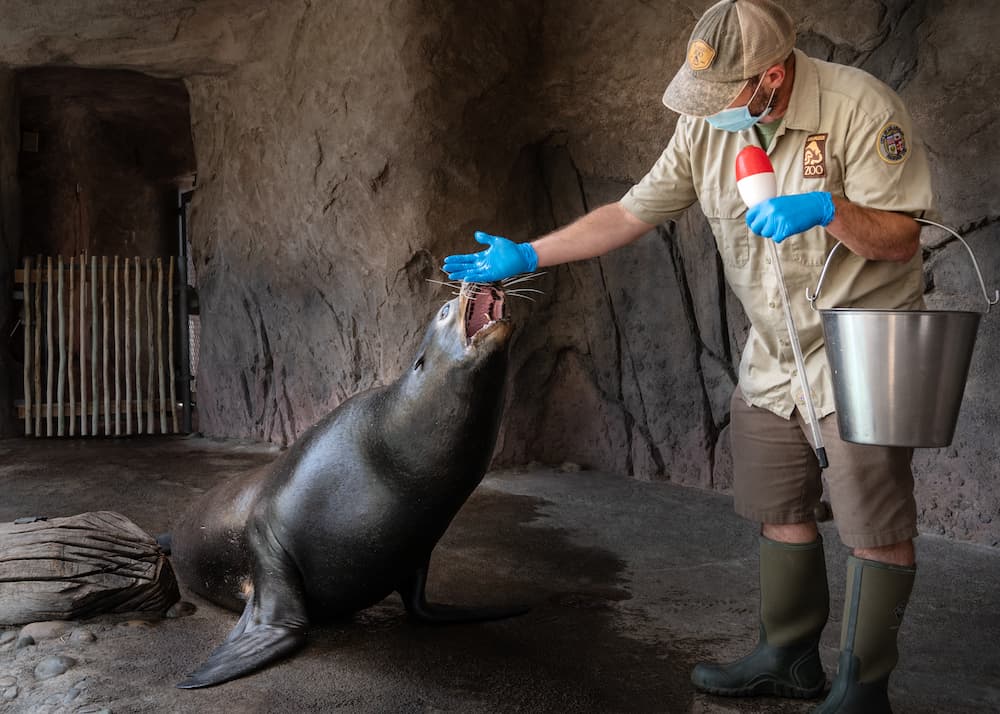
Monitoring for signs of general health is a job that is well suited to keepers, who interact with animals on a daily basis. They are the first line of defense for identifying potential issues and elevating them for help from the Zoo’s veterinarians. Here, Keeper Bryan gives the teeth of Buddy the sea lion a once-over.
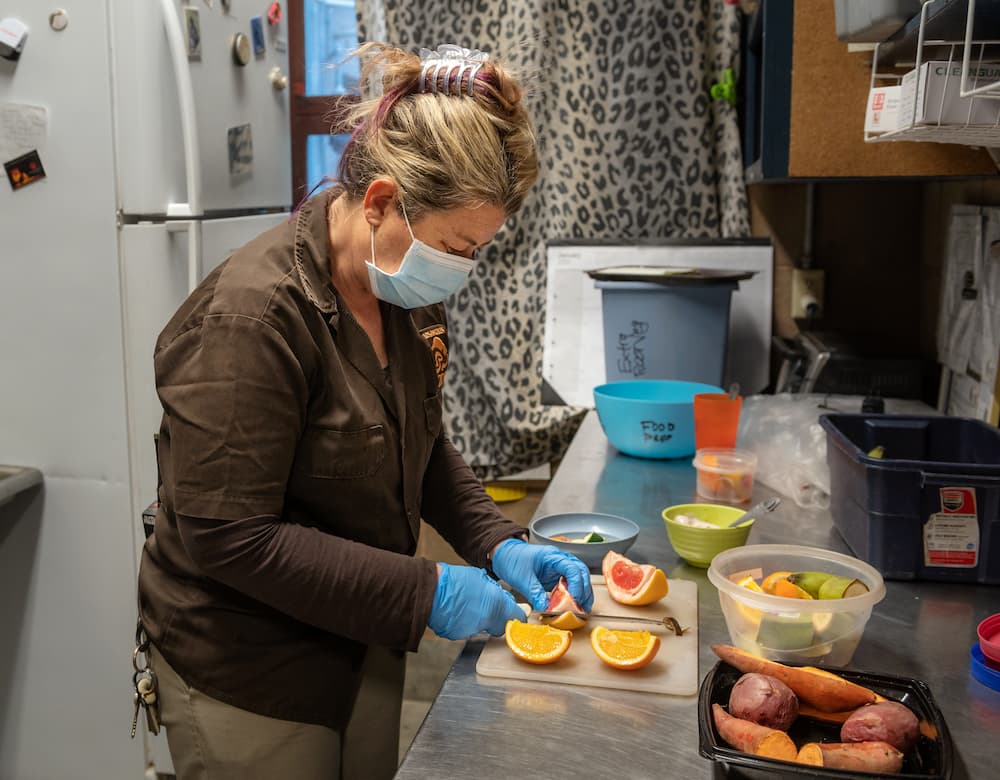
Lots of food prep goes on behind the scenes at the Zoo. While animal diets are determined by the Zoo’s head animal nutritionist, keepers like Tania and volunteer assistants cut, portion, and deliver the fresh, restaurant-quality produce enjoyed by their charges. After food is ready to distribute, keepers take care to serve it to animals. For instance, in the gorilla habitat, produce is spread throughout the area so gorillas can “forage” for it like they would in the wild. And our giraffes, for example, prefer their lettuce at room temperature, rather than chilled—a fact discovered by our keepers!
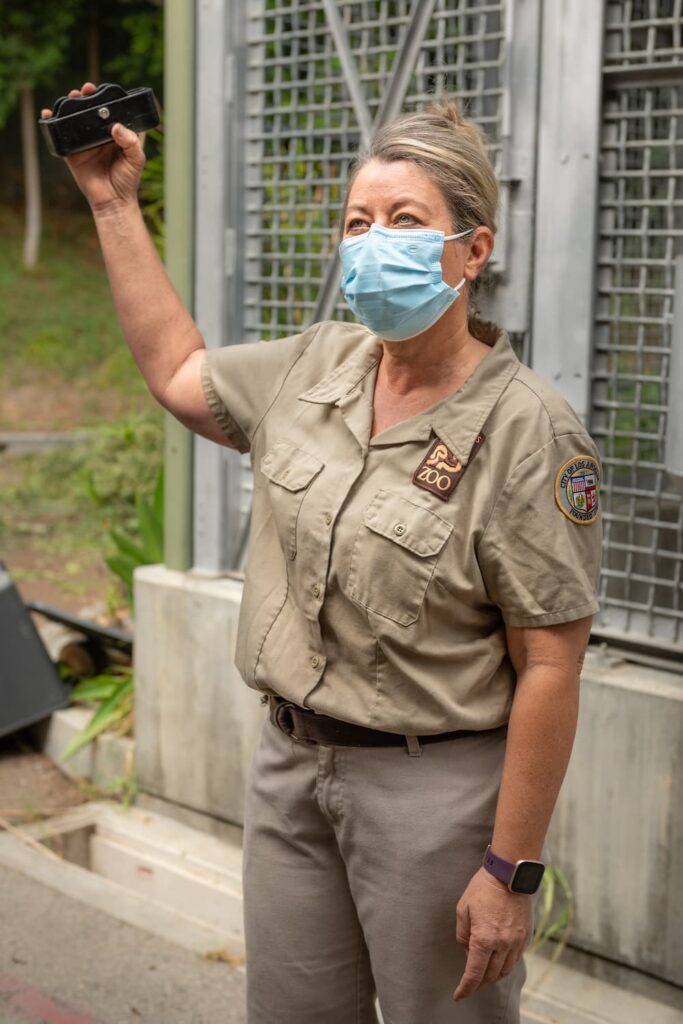
Keepers develop and work in routines so animals know what to expect and can respond comfortably. Like Keeper Tania is doing here, they work with tools like this sound maker to signal when it’s time to meet the keepers for care.
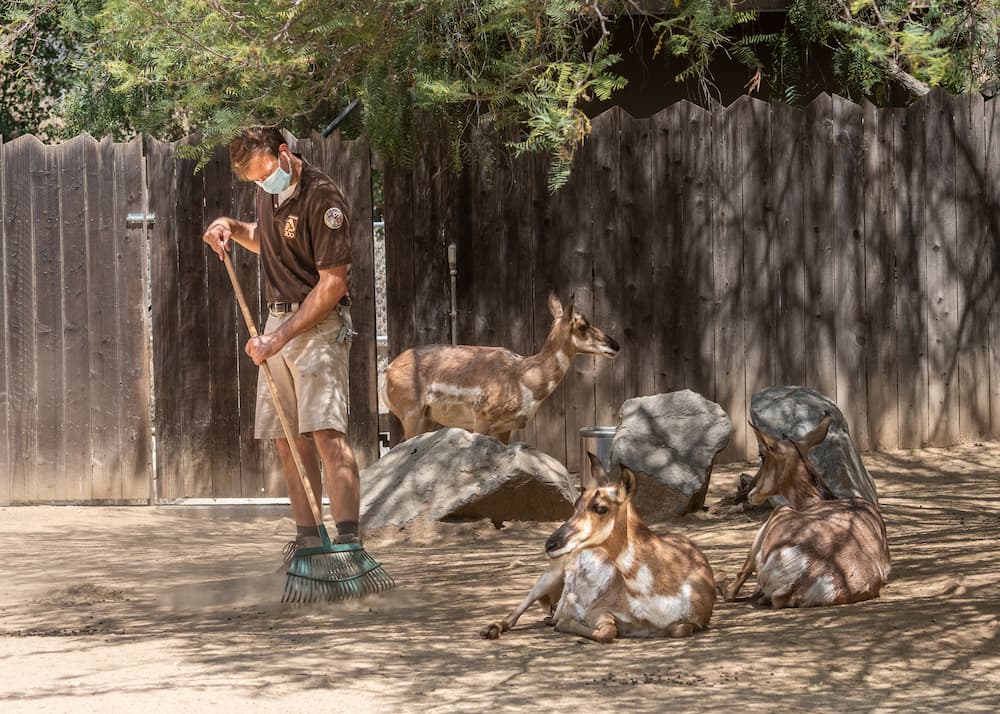
As Keeper Mark knows, a lot of animal care is cleaning. From scooping poop to keeping habitats neat, keepers make sure every species can live safely and healthfully in their environment.
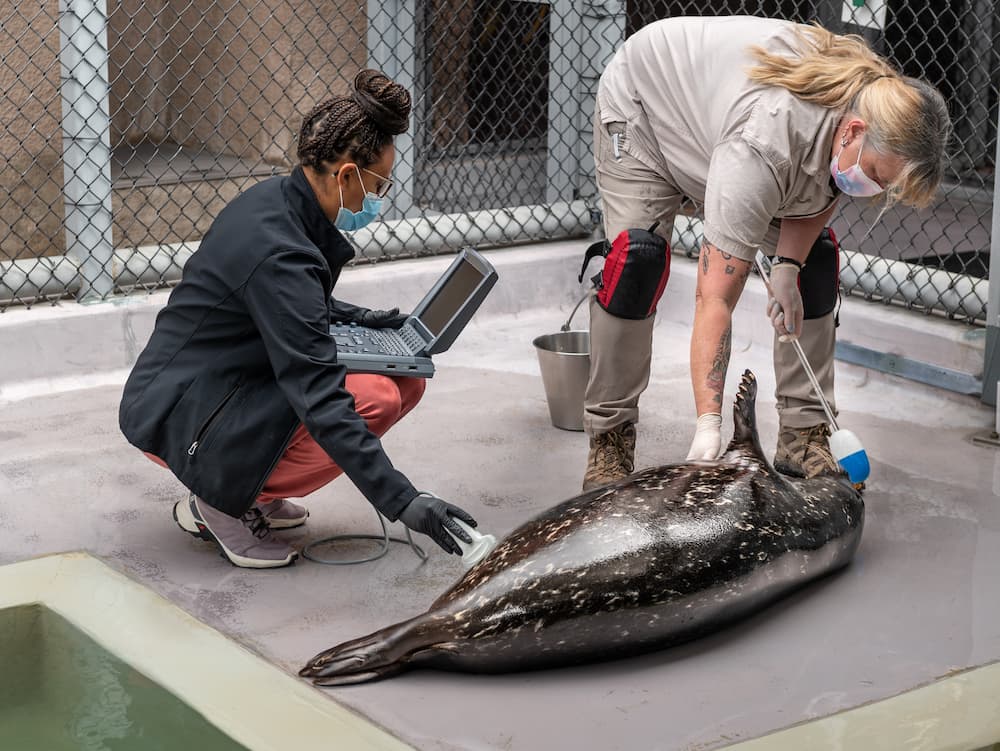
The trust built between keeper and animal is vital when out-of-the-ordinary moments happen. Here, Keeper Jennifer makes sure Ziggy stays happily in place while being examined by Dr. Jordan Davis-Powell.

During the pandemic, the birds of Bird Show had to get used to a new lifestyle, just like we did. They still trained behind the scenes, but the lack of audiences meant they needed to be reacclimated to crowds before the Bird Show could return for Zoo guests. Keepers like Dmetri work daily with the birds to get them comfortable enough to display their natural behaviors for a full house.

